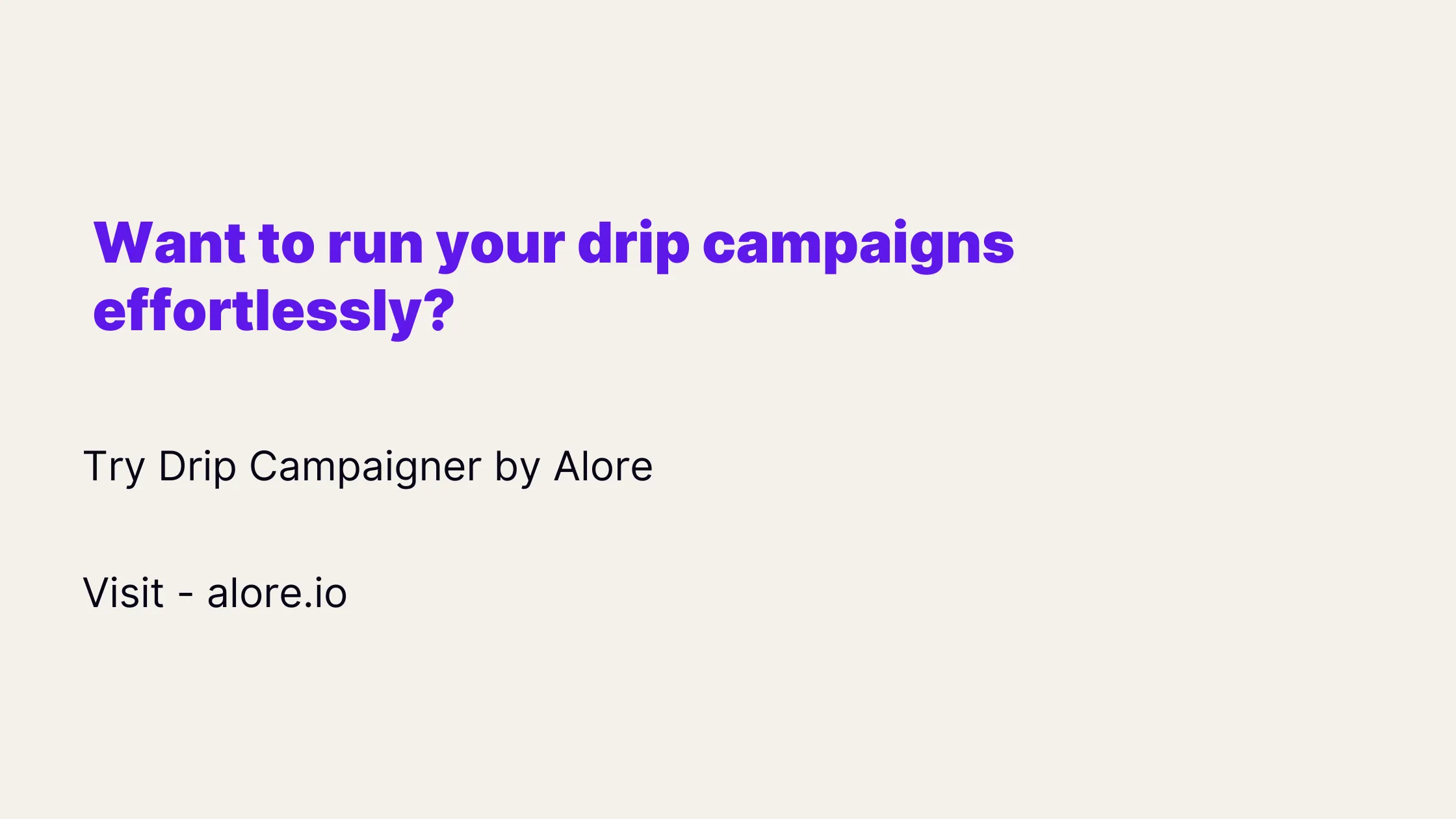Introduction to Drip Marketing

In a world teeming with marketing jargon and complex strategies, it's refreshing to find one that lives up to its name - a drip of marketing automation.
Simple, powerful, and intuitive, the concept is easy to grasp but holds immense potential for businesses of all sizes.
Defining Drip Campaigns

So, what is a drip campaign?
Picture a watering can, gently pouring droplets of water onto a plant, nurturing it, ensuring it doesn’t go thirsty.
A drip campaign functions in a similar way, providing your audience with a steady, measured flow of information. Instead of overwhelming your prospects with one big gush of information, a successful drip campaign 'drips' it to them, little by little, in a digestible, engaging, and, ultimately, effective way.
But what does this look like in a practical sense?
An email drip campaign, for instance, involves a sales team sending out a series of pre-written, automated emails to customers or leads. These emails are strategically timed and can be triggered by specific user actions or behavior. Each email serves a specific purpose - to guide the user through a journey. This journey might be a customer lifecycle, an onboarding process, or a sales funnel.
Now, this doesn't mean that email drip campaign/ example of campaigns are limited to emails. They can be executed via various channels like SMS, push notifications, or even direct mail. However, the popularity of email drip campaigns has made the terms somewhat interchangeable. For the sake of simplicity, we will focus on email drip campaigns in this article.
The Rationale for Using Drip Campaigns

But why would a business want to drip campaign emails rather than pour? The answer is all about engagement and relevance.
Unlike traditional marketing strategies, where the same message is broadcasted to everyone, a drip campaign allows for targeted, timely communication based on a user's behavior or stage in the customer journey. It's a smart way to stay in the minds of your existing customers, nurture those relationships, and increase your brand's touchpoints.
And guess what? It works. Drip campaigns are known to have open rates about 80% higher than single-send emails, and average click-through rates on drip emails are about three times higher. But why are they so successful?
Imagine signing up for an online course. If you were bombarded with all the course content in a single day, you’d likely feel overwhelmed. On the other hand, receiving bite-sized lessons over a period of time seems manageable, doesn’t it? The same principle applies to drip campaigns.
Communicating Based on User Behavior: A Unique Feature

But the beauty of drip campaigns lies in their flexibility and adaptability. One key feature that distinguishes drip campaign examples of them from other forms of marketing is the ability to automate communication based on user behavior.
For instance, if a customer has abandoned their shopping cart on your eCommerce business site, you can set up a drip campaign to send a gentle reminder email first purchase after a few hours, a discount offer after a few days, and maybe a follow-up email with similar products a few weeks later. Or suppose you run an online course. An automated drip campaign could send a welcome email upon registration, course content every week, and a certificate of completion at the end.
The power of automated drip campaigns also lies in their relevance. The emails are not random or one-size-fits-all; they are based on where your customer is in their buyer's journey, making each email feel personal and valuable.
So, what is a drip campaign? It is a drip marketing campaign that's a strategic way of delivering the right message, to the right person, at the right time.
And with that, we've just scratched the surface. Throughout this article, we will delve deeper into how to set up successful drip campaigns, the various types of email drip campaign examples, how effective drip campaigns are, best practices, examples, and more. So sit tight, because this journey is about to get interesting!
Planning and Implementing Successful Drip Campaigns
Setting Up Drip Campaigns: A Step-by-Step Guide
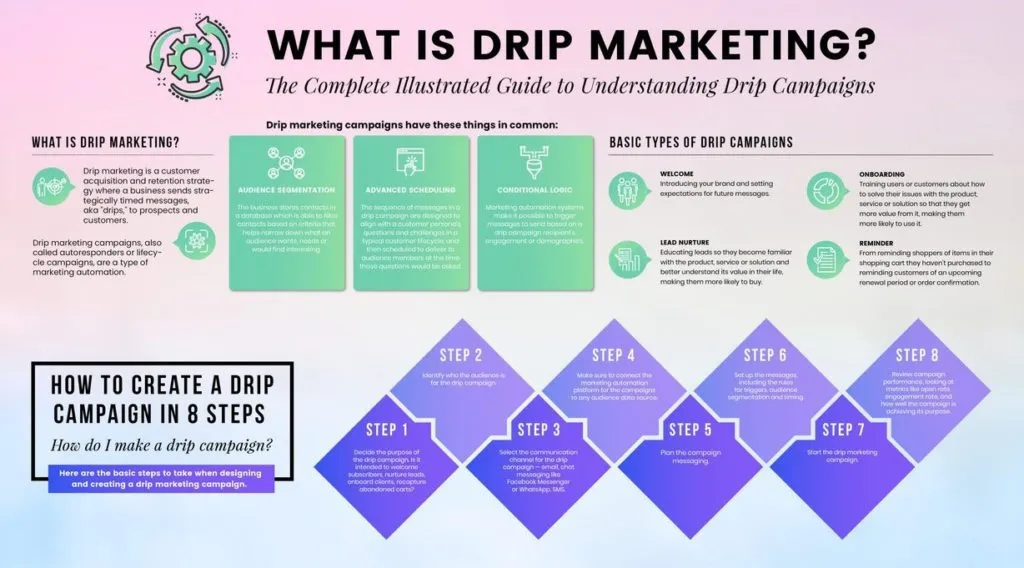
So, you're intrigued by the prospect of drip marketing, and now you want to set up your own email drip campaign ideas. Where do you begin? Let's break it down together, one step at a time.
- Identify Your Goals: What do you hope to achieve? Whether boosting sales, nurturing leads, or welcoming new subscribers, your goal will guide your strategy.
- Segment Your Audience: Not everyone needs the same message. Tailor your content to different segments of your audience to make it more relevant.
- Create Your Content: Writing engaging and relevant content is key. More on this later!
- Determine the Schedule: Timing matters. Plan when each email will be sent for maximum impact.
- Choose the Right Tools: There are many platforms out there. Pick one that suits your needs.
- Monitor and Adjust: Track the performance and make necessary adjustments.
And voila, you're on your way! But let's dig deeper.
Identifying Your Target Audience
Identifying your target audience is much more than categorizing your users into broad demographics. It's about understanding their needs, preferences, and behavior on a granular level.
- Psychographics: These include lifestyle, values, attitudes, and personality traits. A deep understanding of these factors can enable you to tap into the motivations of your audience.
- Purchase Behavior: What is your audience's purchasing behavior? What triggers them to buy? Which features do they value the most in your products or services?
- Feedback and Reviews: Listen to what your audience is saying about you and your competitors. Online reviews, social media comments, and customer feedback provide valuable insights into their needs and wants.
Actions and Demographics
Understanding your audience's behaviors and demographics is key to crafting an effective drip campaign. It helps to know how they interact with your brand and what they expect from you.
- Behavioral Data: Monitor how your audience interacts with your previous emails, website, and social media platforms. What content do they engage with the most? When are they most active?
- Segmentation: Split your audience into smaller segments based on their behavior, interests, or demographics. This will allow for more targeted and personalized messaging.
Crafting a Persuasive Message
Crafting a persuasive message is an art and requires a deep understanding of your audience's motivations and pain points.
- Emotionally Engaging: Connect with your audience on an emotional level. Use stories, experiences, or scenarios that they can relate to.
- Call to Action: A persuasive message is not complete without a clear call to action (CTA). Whether it's to buy a product, sign up for a newsletter, or download a resource, your CTA should be compelling and easy to follow.
- Value Proposition: Clearly communicate the value of your product or service. How can it improve your audience's life or solve their problems? This can be the difference between a successful and a failed campaign.
Mapping Out Your Campaign Plan

Every good plan for an email campaign starts with a blueprint. For your drip campaign, this blueprint should outline your overall strategy, individual tasks, deadlines, and performance metrics.
- Strategy: Identify what you want your drip campaign to achieve and how it aligns with your broader marketing goals. Will it nurture leads? Improve customer retention? Identify its purpose and how it will accomplish it.
- Tasks and Deadlines: From content creation to testing email sequences, there are numerous tasks in a drip campaign. Assign deadlines to ensure a timely launch.
- Performance Metrics: These are indicators of your campaign's success. Will you measure open rates, click-through rates, conversions, or all three? Define this early to track progress effectively.
Launching Your Campaign
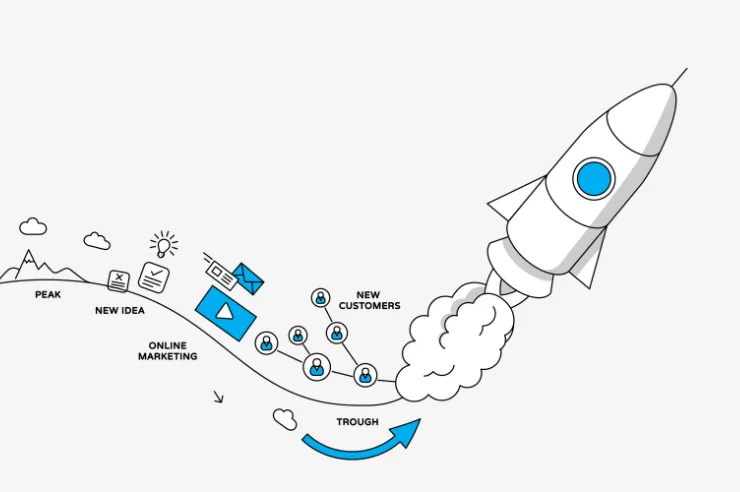
Initiating your next email drip campaign is an exciting phase of a drip email campaign. But don't get too caught up in the excitement and forget the details.
- Testing: Before pressing the 'go' button, test your emails. Ensure all links are working and your email displays correctly across various devices and email clients.
- Scheduling: Timely delivery is essential. Ensure your emails are dispatched when your audience is most likely to read them. Research indicates mid-week emails in the late morning often perform best.
- Monitoring: Launching your campaign isn't the end. It marks the beginning of an observation period to ensure everything runs smoothly. Make sure someone is in charge of monitoring the campaign's performance.
Evaluating and Fine-Tuning Your Approach
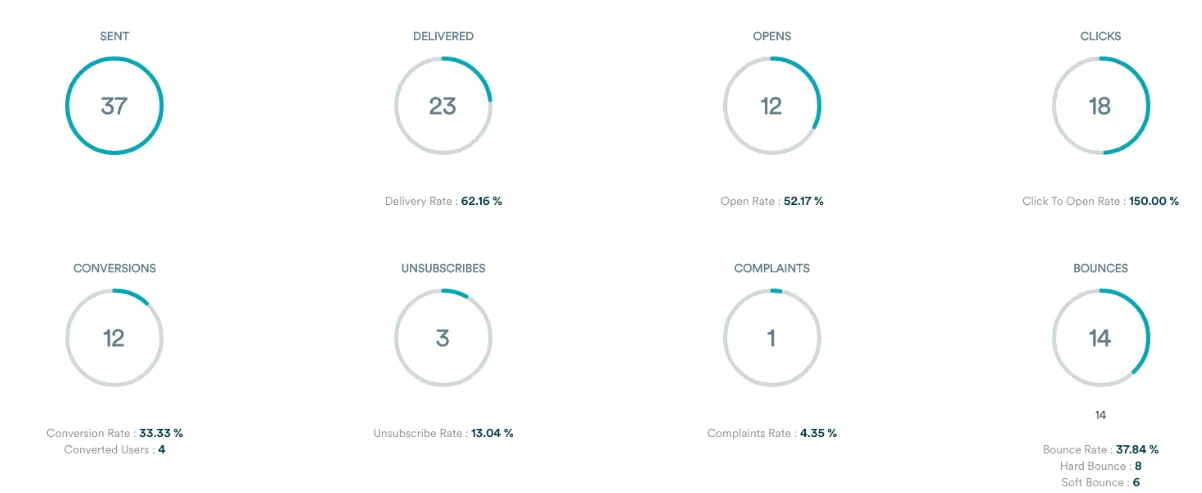
Once your drip campaign email marketing software is running, you need to evaluate its effectiveness regularly. It's a cyclical process of measurement, analysis, and improvement.
- Measuring Performance: Use your previously defined metrics to measure performance. This could be open rates, click-through rates, or conversion rates.
- Analyzing Results: Go beyond raw numbers. What do these numbers tell you about your campaign? Are certain emails performing better than others? Why might that be?
- Improving Your Campaign: Use the insights from your analysis to enhance your campaign. If one email has a high open rate, use its subject line as a model. If another email has a low click-through rate, tweak its call to action.
Automated Tools for Drip Marketing

Automated tools like Mailchimp, HubSpot, Alore, and Sendgrid aren't just convenient; they can significantly enhance your drip marketing campaigns. Let's delve into the features they offer:
- Automation: Schedule your emails to send automatically, saving time and ensuring consistent communication with your audience.
- Personalization: Mailchimp can personalize your emails based on customer data, improving relevance and engagement.
- Analytics: Detailed reports allow you to monitor and analyze your campaign's performance.
- Testing: A/B testing features enable you to test different subject lines or content to see what works best.
Mailchimp isn't the only tool out there, but it's a strong example of how these platforms can streamline and optimize your drip campaigns. It might be the edge you need to turn a good drip campaign example into a great one.
Drip Campaigner by Alore
Discover the power of personalized cold email campaigns with Alore's Drip Campaigner. This all-in-one solution is designed to streamline your email marketing process, offering pre-built templates, advanced automation, real-time analytics, and A/B testing tools. Whether you're an individual or a cold email agency managing multiple clients, Alore's Drip Campaigner provides the tools you need to craft engaging campaigns, track their performance, and optimize for maximum impact. With Alore, you can transform your cold email strategy, increase response rates, and drive success.
Get a free trial here
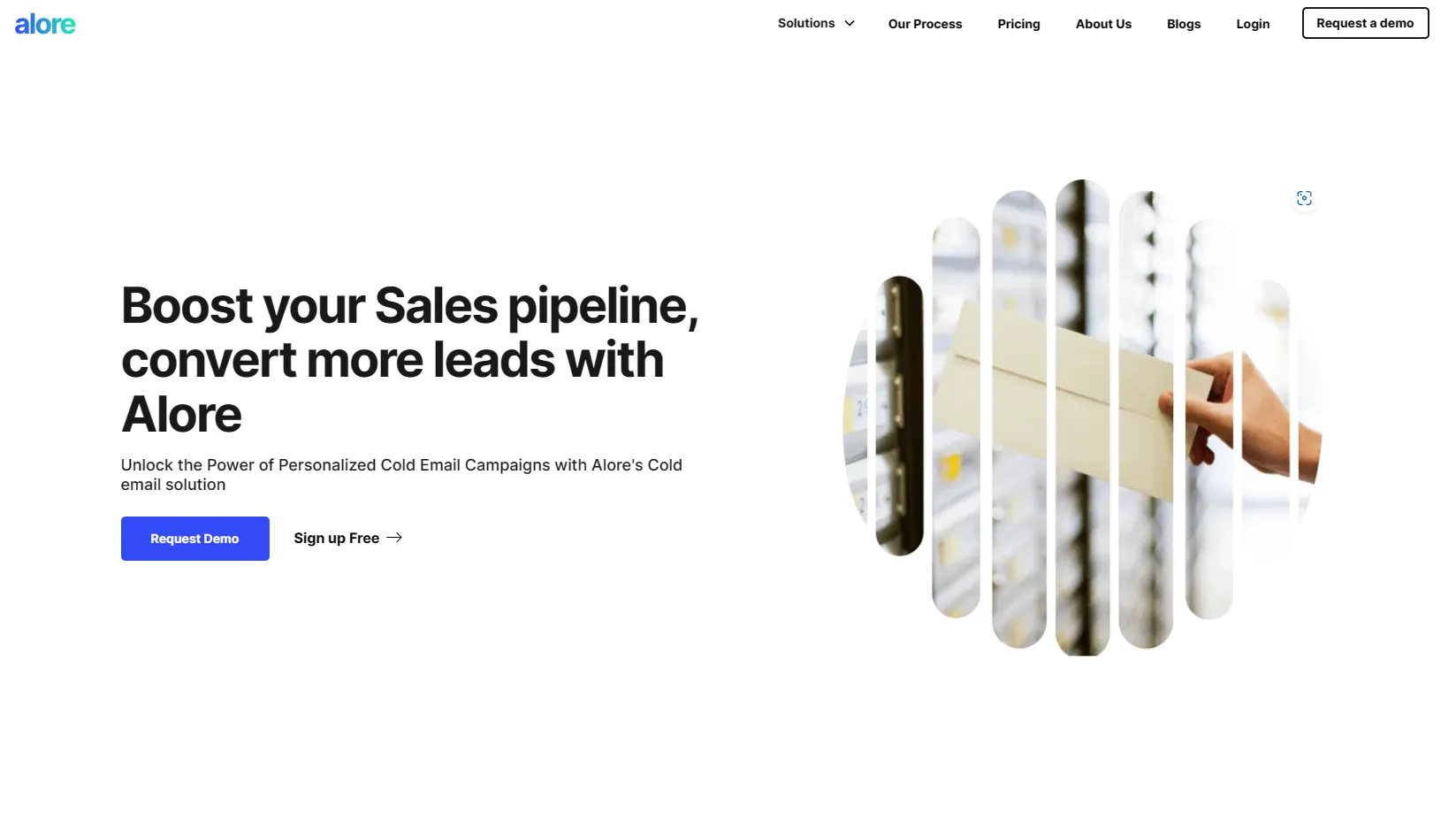
Harnessing Drip Campaigns: When and Why They Excel with Real-World Examples
With its unique blend of customization and automation, Drip marketing can transform various aspects of your existing customer interaction process. Still, it shines most brilliantly in specific scenarios. We'll examine these, enriched with examples, to shed light on how you can best leverage drip marketing.
Nurturing Leads
Let's say you've attracted a potential customer – what next? Drip campaigns serve as your digital salesperson, providing timely and pertinent information that gradually nudges these prospects toward making a purchase. For instance, real estate company Zillow utilizes drip emails to provide potential home buyers with relevant listings, maintaining their interest and steadily drawing them towards a purchase.
Welcoming New Users
A welcome series is like your brand's digital handshake, setting the tone for your new relationship. Take Dropbox, for example. Their welcome drip series introduces new users to various features, effectively explaining how they can get the most out of the platform.
Onboarding
Simplifying the onboarding process with drip emails can elevate a new user's experience with your product or service. Slack's onboarding emails stand out in this regard. They guide new users step-by-step, breaking down the complexities of the platform into digestible, actionable instructions.
Abandoned Cart Recovery
A well-timed email can reignite interest in an abandoned shopping cart. Fashion retailer ASOS does this effectively by sending an email with product images and an easy link to complete the transaction, prompting the customer to revisit their abandoned cart.
Tailored Recommendations
Personalized product suggestions can spur engagement and purchases. Amazon excels in this with their 'Based on your browsing history emails, demonstrating how personalization can drive repeated business.
Renewal Reminders
Automated reminders for renewing services or subscriptions foster customer loyalty and ensure a steady revenue flow. Streaming service Netflix sends a reminder email before a user's free trial expires, prompting them to subscribe and thus converting them into paying customers.
Confirmations
Confirmation emails reassure customers by keeping them informed. For instance, airlines like Southwest send out a drip email series confirming the booking, reminding of check-in times, and even providing travel guides for the destination.
Encouraging Engagement
Re-engage dormant customers with relevant content or promotions. Starbucks does this well, sending personalized offers to customers who haven't made a purchase in a while, encouraging them to visit again.
Delivering Courses
Drip campaigns are excellent for spaced learning. Websites like Codecademy deliver lessons via drip emails, providing learners the convenience of learning at their own pace, which boosts engagement.
Addressing Unsubscribes
An unsubscribe isn't necessarily the end. You can turn it into an opportunity for feedback. SurveyMonkey, for example, includes a quick survey in their unsubscribe confirmation email, gleaning insights into why users chose to leave.
The ability to adapt to these varying scenarios is what makes drip campaigns an essential tool in your marketing arsenal. By understanding these use cases, you can set the stage for a more fruitful interaction with your customers, boosting not just your email engagement but also your overall business growth.
Benefits and Importance of Drip Marketing for Business Growth

The magic of drip marketing lies not only in its adaptability across various scenarios but also in its broad-reaching advantages for businesses aiming to thrive. Let's unpack how drip marketing acts as a key driver for business growth, supported by evidence and real-world applications.
Enhancing Customer Engagement
Drip marketing facilitates an ongoing dialogue with your customers. It keeps your brand at the forefront of their minds through consistent and relevant communication. According to a study by the Direct Marketing Association, targeted and segmented emails, a cornerstone of drip marketing, accounted for 58% of all email revenue, indicating higher customer engagement.
Building Trust
Drip campaigns allow you to provide valuable content over time, building trust and strengthening your brand's relationship with your customers. For instance, healthcare provider Mayo Clinic sends regular health tips and articles to its subscribers, offering value that nurtures trust.
Boosting Sales
By providing timely and relevant content based on a customer's actions or stage in the buying or sales cycle itself, drip marketing can significantly improve conversion rates. For example, in 2019, the marketing team at the software company Moosend saw their conversion rates double after implementing a drip campaign.
Increasing Efficiency
Automation is at the heart of drip marketing, freeing up valuable time and resources that can be allocated elsewhere in your business. This improved efficiency was highlighted in a GetResponse report that found marketing automation users had a 32% increase in their email open rates and a 26% increase in click-through rates.
Personalization for Greater Impact
Drip campaigns allow for unprecedented levels of personalization, which can lead to increased customer satisfaction and sales. An Experian study found that personalized emails deliver 6x higher transaction rates, demonstrating the direct impact of personalization on sales.
Fostering Customer Retention
Through ongoing engagement, drip marketing can help maintain brand loyalty, fostering customer retention. An example of this is Adobe's drip campaign offering helpful tips and tricks to customers, ensuring they continue to get value from the software and stay loyal to the brand.
Gaining Insightful Metrics
Drip marketing tools provide insightful metrics to help you fine-tune your campaigns for maximum effectiveness. According to Litmus, marketers who use analytics in their email campaigns report 38% better customer engagement and a 37% increase in revenue.
Re-engaging Dormant Leads
Automated follow-ups can re-engage prospects who have fallen silent, bringing them back into your sales funnel. Grammarly successfully applies this by sending beneficial writing tips and discounts to inactive users, reigniting their interest.
It's clear from these benefits and examples that drip marketing, when properly executed, can serve as a powerful instrument for business growth. It bridges the gap between your brand and customers, facilitates sales, and provides valuable insights, making it a critical component of any successful marketing strategy.
Evaluating Drip Campaigns
Peeling back the layers of your drip campaign and examining its effectiveness is essential. It helps to measure the return on your investment, justify the resources dedicated to the drip campaign strategy, and provide insights to fine-tune your future strategies.
Dissecting the Influence: Measuring the Impact of Your Drip Campaigns

To quantify the impact of your drip campaigns, a blend of specific metrics, analytical tools, and a keen eye for detail is necessary. Here's how to go about it:
1. Open Rates: This measures the percentage of recipients who opened your email. A higher open rate generally indicates that your subject line was enticing enough to prompt action.
2. Click-Through Rates (CTR): This gauges the percentage of recipients who clicked on a link within your email. If your CTR is low despite high open rates, it might suggest your email content needs to be more compelling or relevant.
3. Conversion Rates: This metric evaluates the percentage of recipients who completed a desired action, such as making a purchase, filling out a form, or downloading a resource. A higher conversion rate is a testament to the effectiveness of your call to action.
4. Bounce Rates: This determines the percentage of emails that weren't successfully delivered to the recipient's inbox. A high bounce rate could indicate problems with your email list, such as obsolete or incorrect email addresses.
5. Unsubscribe Rates: This assesses the percentage of recipients who opted out of your emails. An increase in this rate might indicate your content isn't resonating with your audience.
6. Engagement Over Time: This metric tracks how subscribers interact with your campaigns over a specific period. A decline in engagement over time might suggest email fatigue, warranting a reassessment of your campaign frequency or content.
Example:
Online retailer Zappos regularly assesses these metrics and tailors its drip campaigns to target customers based on the insights. By doing so, they've managed to maintain an email open rate of over 20%, significantly higher than the industry average.
The Bigger Picture: Do Drip Campaigns Really Matter?
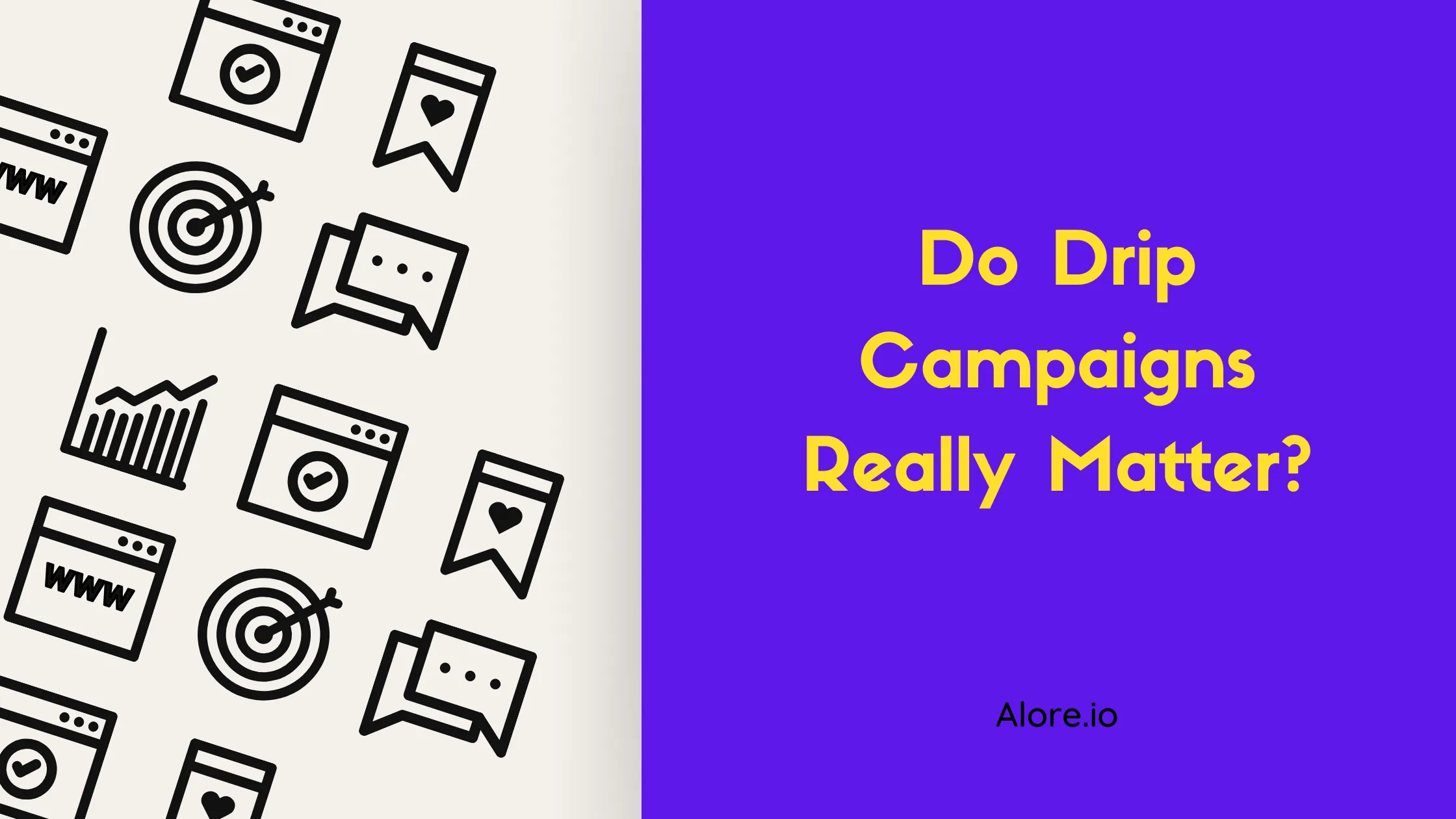
After seeing these metrics, you might wonder, "But do drip campaigns genuinely contribute to my business?"
The answer is a resounding yes, and here's why:
1. Consistent Communication: Drip campaigns enable consistent interaction with your audience, keeping your brand relevant and top-of-mind.
2. Personalized Customer Journey: Drip campaigns allow you to tailor content based on the recipient's behaviors or stage in the buying cycle, enhancing their experience with your brand.
3. Resource Optimization: With automation, you can reach a large audience without an equally large time investment, freeing up resources for other areas of your business.
4. Customer Retention: Through regular engagement, drip campaigns foster customer loyalty, leading to increased customer lifetime value.
5. Higher Conversion Rates: As discussed earlier, the potential of drip campaigns to double conversion rates is a significant boon for any business.
For instance, Shopify, a leading e-commerce platform, attributes much of its customer engagement and conversion success to its well-crafted drip campaigns. By segmenting their audience and delivering tailored content, they've managed to increase both their engagement and conversion rates consistently.
In the grand scheme of things, the strategic value and potential ROI from drip campaigns make them a worthwhile investment for businesses.
Whether you're a small business just dipping your toes into email marketing or a larger corporation looking to improve customer retention and generate revenue elsewhere, drip campaigns hold immense value.
The key is to continuously evaluate and adjust your strategy based on the insights you gather.
Best Practices and Examples of Drip Campaigns

Drip marketing is an art and a science, combining creativity with data-driven decision-making. The following best practices and examples will provide you with a roadmap to crafting your own successful drip campaigns.
Crafting Success: What Makes an Effective Email Drip Campaign?
An effective email drip campaign revolves around a few core elements:
1. Audience Segmentation: Split your audience into segments based on shared characteristics. This allows for personalized messaging, increasing engagement and conversions.
2. Personalization: Tailor your content to individual subscribers. This can range from using the subscriber's name in the email to offering product recommendations based on their browsing history.
3. Timing and Frequency: Understand the best times to send your emails and how often. This can vary depending on your audience and the nature of targeted message in your campaign.
4. Compelling Content: Your emails should offer value to the recipient, whether that's useful information, a special offer, or an entertaining read.
5. Clear Call-to-Action (CTA): Your emails should have a clear and compelling CTA that prompts the reader to take a desired action.
Example: Netflix regularly sends personalized show recommendations based on a user's viewing history, making each subscriber feel understood and valued.
Striking the Balance: The Optimal Number of Emails for a Drip Campaign
Determining the number of emails in a drip campaign is often a question of balance.
Too many emails can feel intrusive, while too few may not sufficiently engage your audience.
Consider the purpose of your campaign, the complexity of your product or service, and your audience's preferences. As a starting point, many successful drip campaigns consist of three to seven emails.
The Blueprint: Designing Email Drip Sequences That Yield Results
A successful email drip sequence usually follows a rhythm:
1. The Welcome Email: Start by thanking subscribers for their interest or recent action.
2. The Value-Adding Email(s): Provide valuable content related to your product or service.
3. The Soft Sell: Introduce your offering in a non-pushy way, linking it to the value you've previously provided.
4. The Hard Sell: Clearly explain your offering and why the recipient would benefit from it.
5. The Follow-Up: Thank them for their time and provide additional resources or next steps.
Example: Airbnb's drip campaign for new hosts follows this sequence, beginning with a welcome email and progressing to emails that provide hosting tips and highlight the potential income from hosting.
Three Essential Types of Drip Email Campaigns
There are several types of drip campaigns, but three stand out due to their effectiveness:
1. Educational Drip Campaigns: These aim to inform the recipient about a particular topic, product, or service.
2. Re-engagement Drip Campaigns: These are designed to win back subscribers who haven't interacted with your brand in a while.
3. Post-Purchase Drip Campaigns: These thank customers for their purchase, offer additional resources, and often upsell or cross-sell other products.
Example: Duolingo's educational drip campaigns are successful in keeping users engaged with regular, tailored language learning challenges.
Proven Success: Examples of Successful Email Drip Campaigns
Bonobos 'Better-Fitting Pants' Campaign
This campaign began with an intriguing question about the recipient's pants. Subsequent emails highlighted the problems with most pants and how Bonobos solved these issues. This drip campaign was successful due to its engaging content and clear CTAs.

Grammarly's Weekly Writing Updates
Grammarly sends its users weekly updates on their writing progress, including the number of words they wrote, their most common mistakes, and their productivity compared to other users. This campaign adds value by providing insights and encouraging continued use of the platform.

Asana's Project Management Tips
Asana provides a series of emails that give recipients tips on managing projects effectively. This campaign is successful because it positions Asana as an expert in the field and provides value before trying to sell anything.
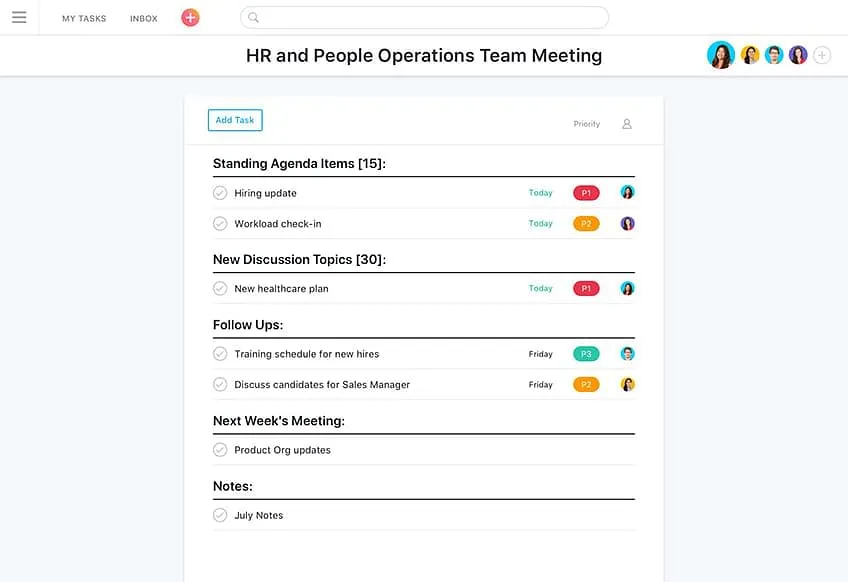
Key Takeaways and Lessons from Successful Campaigns
- Understand your audience: The more you understand your audience, the more personalized and effective your campaign will be.
- Provide value before selling: Successful campaigns often provide valuable content before attempting to sell a product or service.
- Test and tweak: Regularly assess your campaign's performance, and don't be afraid to tweak your strategy based on the results.
- Keep it engaging: Use storytelling, humor, or thought-provoking content to keep your audience engaged.
- Stay relevant: Ensure your content is relevant to your audience's interests and needs.
By understanding these best practices and learning from successful campaigns, you'll be well-equipped to create your own successful drip campaigns.
